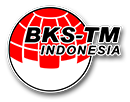Perancangan Rumah Pengering Biji Kopi Menggunakan Plastik Ultra Violet (UV Solar Dryer) Dengan Mekanisme Konveksi Alamiah
Thomas J. Hudin, Verdy A. Koehuan dan Nurhayati
Abstract
Now a days there are quite a lot of developed mechanical dryers (ERK) that use ultra violet plastic (Uv Solar Dryer) to replace the direct drying method when the weather is not supportive. UV Solar Dryer or also known as drying method using the greenhouse effect is a drying method that utilizes solar energy as the main source of heat energy for drying. The problem that will be focused in this research is to design a type of drying house (ERK) using ultra violet plastic with a natural convection mechanism which results in drying efficiency values of coffee beans ranging from 5-10%/hour. Based on the assumption that the initial moisture content of the coffee beans before drying is 60% and after going through the drying process for 16 hours, where per day the drying is carried out for 4 hours starting at 11.00 and ending at 15.00. The final moisture content of coffee beans obtained ranged from 11-12%. The drying rate obtained is 3.06% bk/hour (the level of water content evaporated for one hour of drying) where for each variation of air velocity the level of water content evaporated is the same. The highest drying efficiency obtained in this research is based on each variation of air velocity with an initial mass of 45.60 kg of material, namely at an air velocity of 0.1 m/s of 10.96%/hour occurred at 14.00, at an air velocity of 0.2 m/s at 11.53%/hour occurred at 14.00 and at air velocity of 0.3 m/s at 11.91%/hour occurred at 14.00.
Downloads
References
[2]. Prasojo D. “Efisiensi Proses Pengeringan Tapioka di PT. Umas Jaya Agrotama, Terbanggi Besar, Lampung Tengah.” Skripsi Fateta IPB. Bogor. (2009).
[3]. Putra. 2019. “Potensi Energi Terbarukan di Nusa Tenggara Timur Sangat Kaya. Inilah Datanya”. Pos Kupang Cetak. 15 Januari 2019. Kupang.
[4]. Anonim. 2019. “Luas Areal Kopi Menurut Provinsi di Indonesia, 2015-2019.” Direktorat Jenderal Perkebunan. https://www.coursehero.com/file/48239760/306-Areal-Kopipdf/. (diakses 10 Januari 2020).
[5]. Noviansyah, Chikal. “Perancangan, Pembuatan Dan Pengujian Ruang Pengering Biji Kopi Tipe Cabinet Dryer.” Skripsi Fakultas Teknik UNILA. Lampung. (2015).
[6]. Henderson, S.M. and R.L Perry. 1976. “Agricultural Process Engineering”. The AVI Publishing Co. Inc., Wesport, Connecticut.
[7]. Sasongko, Nugroho Adi, et al. “Pemanfaatan Teknologi Energi Surya Dalam Memenuhi Kebutuhan Air Bersih di Markas TNI Perbatasan Maritim: Studi di Pos TNI AL., Labuan Bajo, Nusa Tenggara Timur.” Jurnal Pertahanan & Bela Negara 9.1 (2019).
[8]. Duffle, J. A., and Beckman, W. A. 1980. “Solar Engineering And Thermal Processes”. Jhon Willey And Sons Inc. New York

 Thomas J. Hudin(1)
Thomas J. Hudin(1)



